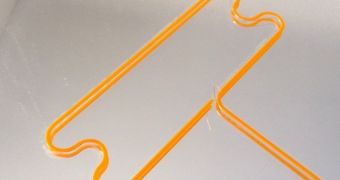Electrical circuitry is an essential part of man's world, which is why there's always room for improvements in quality and the speed at which they can be created. 3D printing might have just enabled the greatest leap in this sector.
So far, 3D printing technology has had to stick to fairly basic objects, even in the case of multi-material printers.
However, it is no secret that the world is holding its breath for 3D printed mechanical and electrical gadgets.
It will be ages before anything like that is accomplished, or at least a few years, but 3D printed parts are already being used in various devices.
And now, there is a technology that can create integrated circuits, and more or less any type of electrical wiring.
Called “Additive Wire-Laying Machine,” the invention belongs to a man named Bas de Bruijn and can work with both copper and plastic.
Basically, the machine creates a copper wire, which it then coats in plastic via the usual melted plastic filament method.
Coils, antennas, flexible printed circuit boards (FPC’s), normal printed circuit boards, all of these things are possible to make by means of the Wire-Laying Machine.
We don't really need to elaborate much why this is remarkable. It's not quite the same as printing whole consumer electronics in a single sitting, but it's the closest thing yet.
So how was it all achieved, you might ask? For one thing, a stepper motor connected to a fifth axis on the control board of the machine was essential. It's what ensures the wire was placed in the correct location before being covered with the melted plastic.
The only thing that the Wire-Laying machine can't do yet is cut the wire after it was fully coated. This is something that will be resolved in time, though, like every other issue you might find with the thing.
Speaking of which, Bas de Bruijn isn't keeping his invention to himself. Instead, he has posted the instructions on Github, where everyone can download it under the CERN Open Hardware License Version 1.2.
We imagine that manufacturing companies will snatch it up really quickly, if they haven't already, and see how they can include the method in their existing operations. Having something that could create a PCB according to a new vision without needing to modify equipment can only be useful. And from what we can tell, the process isn't all that slow either.

 14 DAY TRIAL //
14 DAY TRIAL // 